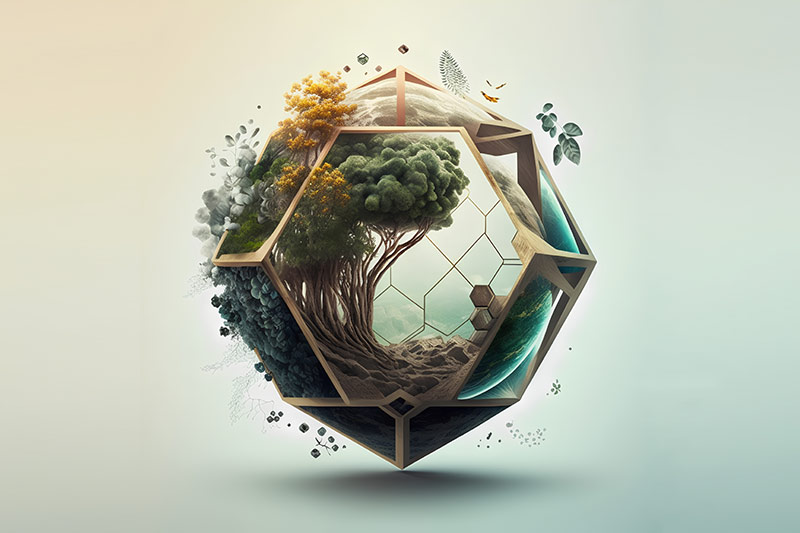Exploring Biomimicry and Green Building Design
The built environment poses one of the biggest threats to the mitigation of the climate crisis – today, 40% of global energy-related carbon emissions are directly linked to built environment activities.
However, in her book ‘Biomimicry: Innovation Inspired by Nature’ (1997), Janine Benyus proposed that engineering netpositive built environments were, in fact, possible through the close study and implementation of natural and biomimetic principles.
Almost three decades later, the creation of energy independent buildings that operate harmoniously with nature in mind is finally on the rise.
What we call Biomimicry, or nature-inspired and regenerative design, is steadily opposing conventional building principles, gaining support among the world’s conservation-minded organisations, scientists, architects, communities, and key stakeholders in the sector.
What is Biomimicry?
Biomimicry is defined as the emulation of nature in human design. As a principle, biomimicry posits that, by mimicking selected natural organisms and ecosystems, various solutions to carbon emissions challenges in the built sector can be implemented harmoniously within the natural world.
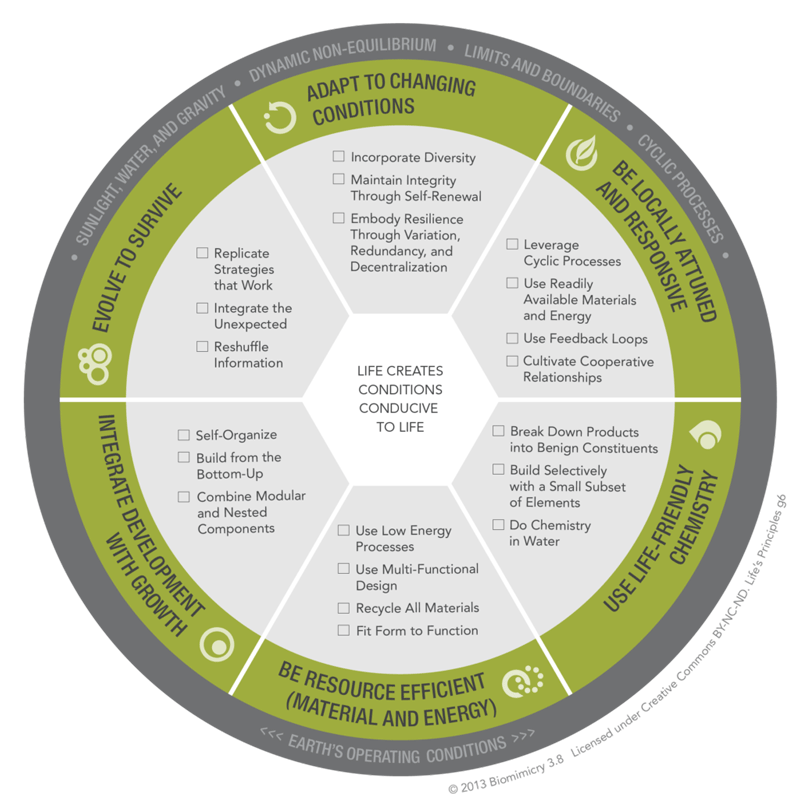
In order to identify and use the principles of biomimicry, nature’s principles need to be understood by key stakeholders. In other words, reducing the environmental impacts of human structures requires built environment stakeholders to understand and copy the natural processes that have allowed life on Earth to thrive for the past 3.8 billion years.
Therefore, the first step is always to pinpoint the inspiring organism or ecosystem and then distil, from its process, the principles to be inspired by and emulated. The image above, designed by biomimicry.net, condenses into a simple design lens the fundamental principles of Biomimetic design:
- Be resource efficient (material and energy)
- Integrate development with growth
- Evolve to survive
- Adapt to changing conditions
- Be locally attuned and responsive
- Use life friendly chemistry
Each design principle is geared toward informing designs that harmonise with one or all of Earth’s five basic operating conditions:
1. Cyclical processes
Processes such as biodegradation, evaporation, condensation, transpiration and precipitation are all fundamental elements of thriving ecosystems. For this reason, biomimetic architects have started to emulate these processes in the design, framework and operation of buildings.
2. The presence of sunlight
Some of the most powerful biomimetic principles revolve around enhancing or catalysing the presence of sunlight – Earth’s preeminent life catalyst. For instance, solar panel energy systems copy the photosynthetic capabilities of leaves to create abundant, non-fossil fuel derived energy.
3. Water and gravity
The way water and gravity act together in nature can be used to create powerful energy systems. For instance, hydro-electric power plants are built to emulate the structure of waterfalls, using the combination of gravity and water resistance to generate electricity.
4. Dynamic non-equilibrium
This life process refers to the ability of ecosystems to demonstrate resilience in the face of rapid unexpected environmental change. For instance, in Japan, the frequent numbers of earthquakes have forced architects to build highly resilient buildings based on an Anti-seismic Structure Standard. As a biomimetic principle, this architectural approach essentially mimics the way trees naturally distribute weight, allowing them to withstand seismic events, gale force winds and monsoon conditions.
5. Limits and boundaries of the Earth and its biological systems
Scarcity is an essential component of all earth’s natural and biological systems – there is always limited water, sunlight, and natural resources. For this reason biomimetic principles in architecture should focus heavily on regenerative design and the re-usability of materials at all levels of the supply chain in built environment manufacturing.

Life’s Principles: Biomimicry in design frameworks
Biomimicry, as a design framework, can be explored as a method to resolve material, architectural and design problems by emulating species that have developed elegant solutions with low environmental impacts.
Therefore, by understanding life’s principles which govern all species on Earth, built environment stakeholders, designers, architects, engineers, and scientists can create buildings that are designed to be:
Locally attuned and responsive
Through a deep understanding of the cycles and conditions of local environments – such as tides, day and night, local ecosystem, geology, climate, flora, fauna, seasons, annual floods or fires – designers, architects and engineers can create structures that fit into and respond in harmony with these local cycles and conditions.
By designing with local conditions in mind, built environment professionals can create solutions that are more regeneratively designed, resilient, efficient and better adapted to their environment.

Material and energy resource-efficient
Built environments can also be designed to actively incorporate the use of sustainable, locally sourced materials in the construction phase, right through to daily operation processes.
By mimicking nature’s ability to be material and resource efficient, for instance, stakeholders can focus on minimising the transportation distance of building materials with a focus on utilising local materials instead. Therefore, the energy resources required in the building process can be drastically limited.
Buildings can also be optimised to minimise waste in daily operations by reusing, recycling, or repurposing their own materials – for instance, designing buildings with materials and systems that can be easily disassembled, reused, or repurposed at the end of their life is one viable approach to creating efficient built environments.
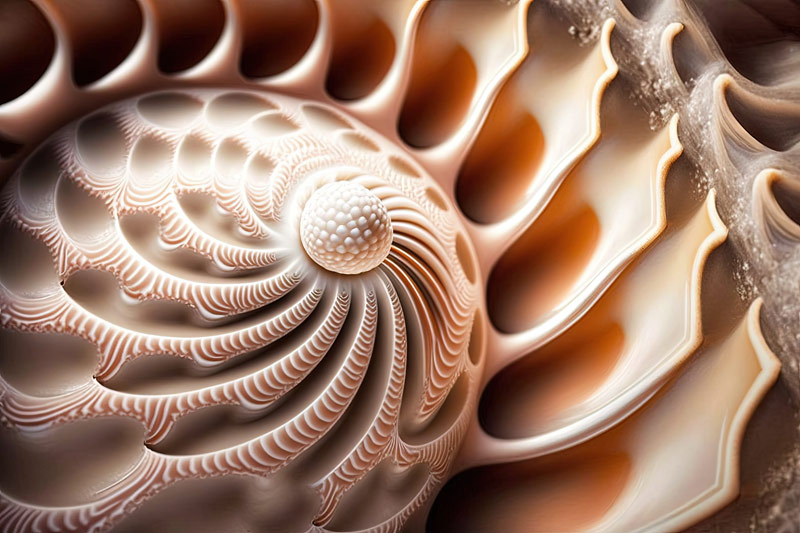
Adaptive to constantly changing conditions
A great example of adaptive architecture is the Eastgate Centre, Zimbabwe, Harare. Mick Pearce, a well known Zimbabwean architect famous for incorporating the principles of biomimicry into his work, designed the famous biomimetic shopping centre to be ventilated and cooled by entirely natural means.
The Eastgate Centre stores and releases heat at crucial moments of the day via fans that operate on a cycle – timed to enhance heat storage during the warm daytime, and heat release during the cool nighttime. This energy efficient cooling and heating system is one of the most famous examples of adaptive biomimetic architecture.
Integrated for developmental growth
In nature, growth and development are not separate processes, but rather they are intertwined and interconnected. Natural systems grow and develop in a way that is responsive to their environment – optimising resource use and efficiency by integrating growth and development processes.
When applied in design, this biomimetic principle allows the creation of systems that are responsive to their environment, and can adapt and evolve over time. It also means designing resource efficient operations processes.

Mindful of life-friendly chemistry
This biomimetic design principle emphasises the importance of chemical processes and products that are safe, efficient, and regeneratively designed. In nature, living organisms carry out a wide range of chemical reactions to support their basic functions such as respiration, digestion, and growth. These reactions typically occur under mild conditions, using non-toxic and renewable raw materials.
It is important to appreciate that nature knows no waste – ecosystems efficiently recycle and reuse materials through closed-loop systems, energy efficiency, biodiversity, adaptation, feedback loops, balance, and cycles.
Therefore, this equilibrium is one of greatest learnings we can receive from nature. By studying and imitating these zero-waste processes, biomimicry practitioners can develop innovative solutions for a variety of human challenges such as energy production, material synthesis, and waste management.
Constantly evolving to survive
From a biomimetic perspective, this principle can be observed in nature through the process of natural selection. Organisms that are able to adapt to changing conditions are more likely to survive and reproduce – passing on their advantageous traits to future generations. By learning from these natural processes and applying them to the built environment, designers can create structures that are better able to adapt to changing conditions and remain resilient over time.
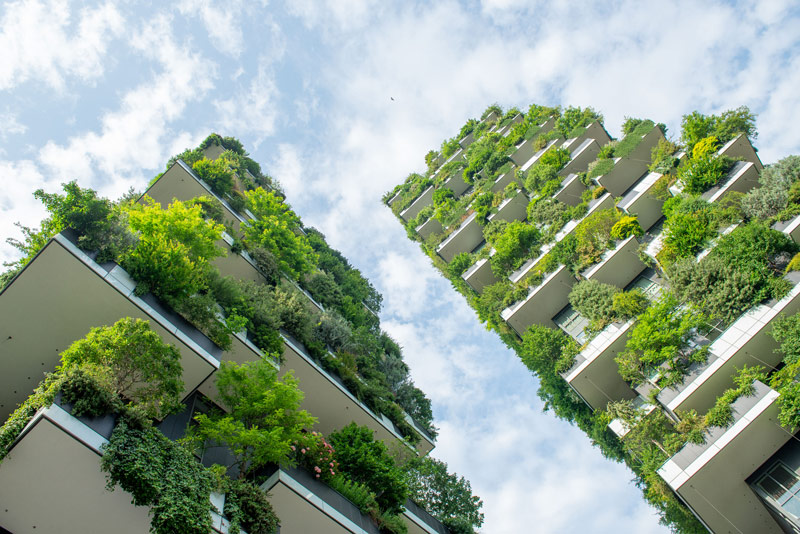
Biomimicry in architecture
Using biomimetic design principles, inspired architects all over the world are designing built environments that recreate natural principles in a myriad of ways. Currently, all biomimetic built environments can be classified into one of the following three categories of emulation:
- Form / Shape
- Process / Function
- Ecosystem
Form / Shape model
These types of built environments are structurally designed to directly imitate the form and function of a single organism.
This model is often used for structures that emulate a specific function or set of functions, such as water filtration or ventilation systems. Architects and designers may look to organisms such as leaves or sea sponges for inspiration in creating efficient filtration systems.
For example, the Cactus Tower in Abu Dhabi was designed to mimic the structure of a cactus, and the way that it responds to heat and light by expanding and contracting, creating a dynamic structure that adapts to its environment.
Process / Function model
The behaviour model category includes environments that are structurally designed to imitate one or more core behaviours of a natural system.
This model is often used to create buildings or structures that respond dynamically to changes in their environment. Again, the Eastgate Centre in Zimbabwe was inspired by the way in which termites create self-cooling mounds to create a building that regulates its own temperature without the use of air conditioning.

Ecosystem model
The ecosystem model involves designing a built environment that mimics an entire interconnected ecosystem, with a focus on self-sufficiency and regenerative design.
This model is often used for buildings or communities that seek to reduce their environmental impact and operate in a self-sustaining manner. For example, the Living Building Challenge, forming part of the Living Community Challenge, is a green building certification program that aims to create buildings and communities that operate as autonomous ecosystems, using renewable energy sources and treating all waste on site.
The California Academy of Sciences Museum’s Green Roof, designed by Renzo Piano, is another example of a biomimetic ecosystem model. The roof incorporates native plant species, rainwater harvesting systems, and promotes biodiversity – enhancing energy efficiency and sustainability while creating a habitat for local wildlife.
Biomimicry examples: architecture and building design
Here are some more examples of the three models of biomimetic architecture in employed around the world:
The Esplanade building, Singapore: Form / Shape
The Esplanade is designed to resemble a durian fruit, a popular tropical fruit found in Southeast Asia. Its unique shape and exterior are inspired by the way the fruit’s spiky exterior protects the soft flesh inside.
Lotus Temple, Delhi, India: Form / Shape model
The Lotus Temple in Delhi utilises a form model in its design, drawing inspiration from the graceful shape of a lotus flower in full bloom. The temple’s unique form, resembling lotus petals, represents purity and enlightenment. The biomimetic approach creates a visually stunning and spiritually meaningful architectural masterpiece.
Las Palmas Water Theatre, Canary Islands: Process / Function model
The Las Palmas Water Theatre is inspired by the way that water moves in natural systems, specifically the way that waves and ripples form. The theatre’s architecture features a unique undulating roof that mimics the movement of water.
Eastgate Centre, Harare, Zimbabwe: Process / Function model
The Eastgate Centre is designed to mimic the way that termite mounds regulate temperature in their colonies. Its innovative design features a natural ventilation system that uses the building’s concrete structure to store and release heat, reducing the need for air conditioning or heating.
Sahara Forest Project, Aqaba, Jordan: Ecosystem model
The Sahara Forest Project aims to create a self-sustaining ecosystem in the middle of the desert through the use of a combination of technologies such as solar power, saltwater greenhouse, and evaporative hedges – focussing on regenerative design and self-sufficiency.
The Eden Project, Cornwall, UK: Ecosystem model
The Eden Project is a series of biomes that house a wide variety of plants from different regions of the world. This design aims to create a self-sustaining environment that supports a diverse range of plant life.
Smart city, Abuja, Nigeria: Ecosystem model
Abuja’s smart city is designed to be a sustainable and self-sufficient urban environment – its design is focused on energy efficiency, waste reduction, and the use of renewable resources. The city aims to be a model for sustainable urban development in Nigeria and beyond.
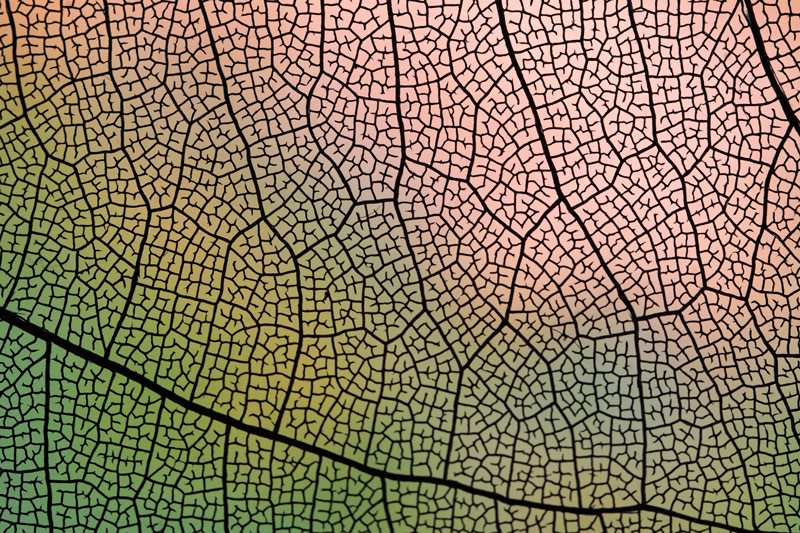
Biomimicry in green building design
With the help of conservation-minded organisations, scientists, architects, and communities in the building sector, biomimicry is gradually opposing conventional building principles. We believe the incorporation of biomimetic principles into building design is a necessary and revolutionary approach to tackle the challenges posed by climate change in the built environment and its contribution to these challenges in turn.
By studying natural organisms and ecosystems, various solutions to carbon-reduction related challenges (and many others) can be implemented to work harmoniously with the natural world.
A great place to start incorporating biomimetic principles into building design is through green building certifications. For more information about green building, read our article on the green building certification process.


